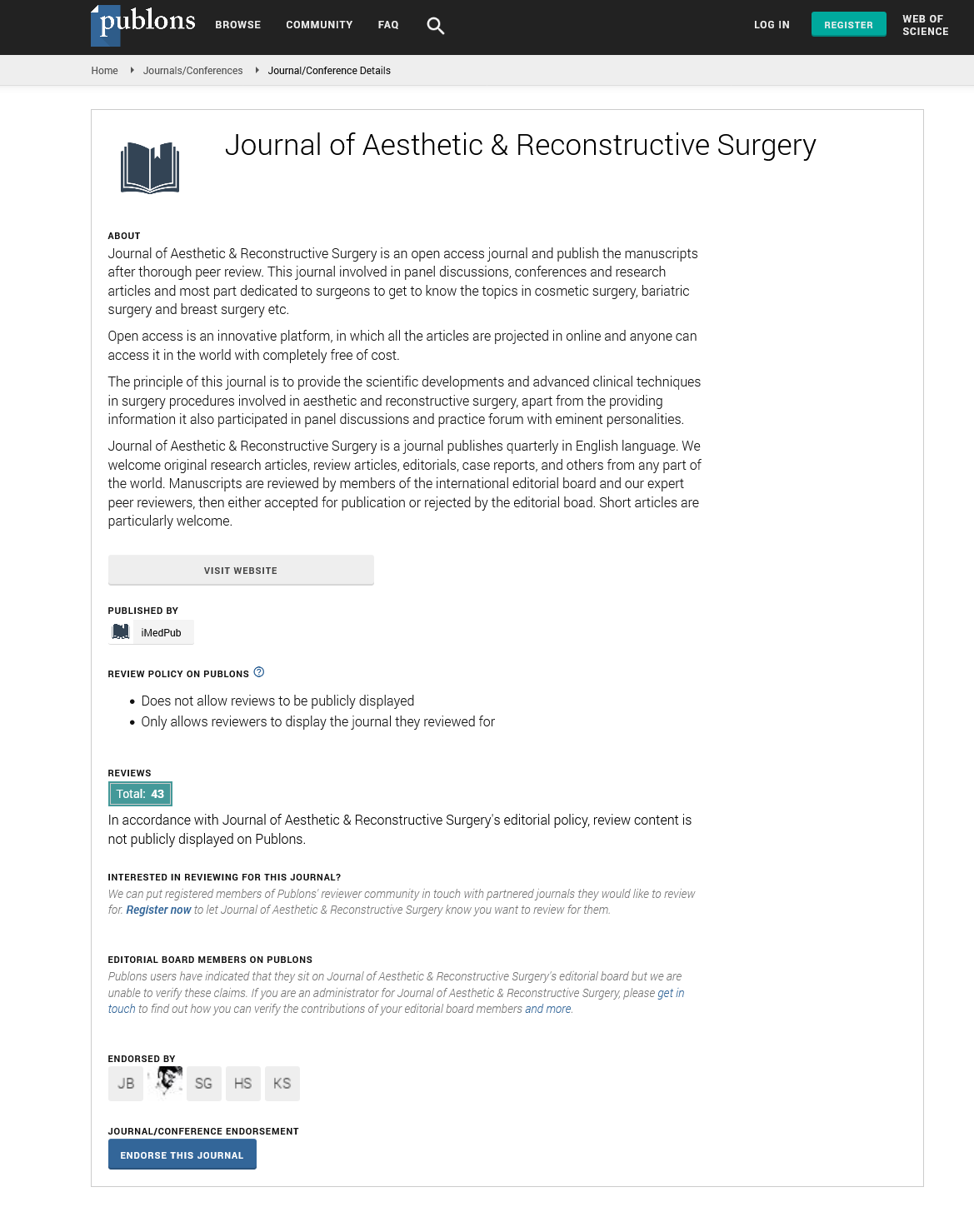ISSN : 2472-1905
Journal of Aesthetic & Reconstructive Surgery
Mastering facial lipofilling
2nd International Conference on Plastic & Aesthetic Surgery
July 27-28, 2017 Vancouver, Canada
Glayse June Sasaki Favarin
Belvivere Center for Plastic Surgery, Brazil
ScientificTracks Abstracts: J Aesthet Reconstr Surg
Abstract
Introduction: Facial volume loss has become widely accepted as one of the contributing factors in global facial aging. Many articles and much more attention has been directed toward techniques aimed at restoring lost volume with lipofilling. Lipofilling is able to address age-related volume loss, soften facial wrinkles, and improve skin texture. Autologous fat is a biological and durable filler material that can easily be harvested with low donor-site morbidity in most patients. Besides that fat is an abundant (and renewable!) source of mesenchymal multi-potent cells.
Methods: This retrospective chart review evaluated 106 patients who were treated with microfat grafting and intradermal fat grafting in facial contouring and rejuvenation. Fat harvesting, preparation and injection techniques are described and illustrated by video. Pretreatment and post-treatment photographs were compared regarding improvement of facial contour, and complications were recorded.
Results: The follow-up period ranged from 6 months to 2 years. Fifteen percent of the patients had a refill procedure 6 or more months after the first procedure. The deep central malar, lower lid cheek junction and nasolabial folds are the most commonly injected areas. Complications included palpable lobules in the nasolabial folds (5%) and fat resorption, which was seen in all patients, with a clinical range from ±15% in the immobile malar area and chin region to ±50% in the mobile lip area.
Conclusion: The goal of volume rejuvenation is the modification or elimination of age-specific shadow patterns and restoring the balance of volume seen in a youthful face. Facial lipofilling has become an important tool in volume replacement for the right patient, and better techniques have led to more reliable and reproducible long-term outcomes. Although autologous fat injection is associated with some degree of reabsorption, in our opinion, secondary augmentation at an early date to reaugment areas, where reabsorption has occurred usually is quite successful.
Biography
Glayse June Sasaki Favarin graduated in Medical School in 1999. She has acted as a Plastic Surgeon, since 2003; and is an Assistant Professor at Unesc University in Brazil. She concluded her Master’s degree at São Paulo Federal University. She is a full member of the SBCP (Brazilian Plastic Surgery Society), the ISAPS (International Society of Aesthetic Plastic Surgery) and the ASPS (American Society of Plastic Surgery). She has scientific publications in national journals and scientific papers at national and international conferences. Her expertise includes aesthetic surgeries with focus on facial rejuvenation. She has her practice set in Criciuma, where she started her private office, Belvivere Center for Plastic Surgery in 2007, together with her husband Dr. Eduardo Favarin.
E-mail: glaysejune@yahoo.com.br
Google Scholar citation report
Citations : 130
Journal of Aesthetic & Reconstructive Surgery received 130 citations as per Google Scholar report
Journal of Aesthetic & Reconstructive Surgery peer review process verified at publons
Abstracted/Indexed in
- Google Scholar
- China National Knowledge Infrastructure (CNKI)
- Directory of Research Journal Indexing (DRJI)
- WorldCat
- Publons
- Geneva Foundation for Medical Education and Research
- Secret Search Engine Labs
- Euro Pub
Open Access Journals
- Aquaculture & Veterinary Science
- Chemistry & Chemical Sciences
- Clinical Sciences
- Engineering
- General Science
- Genetics & Molecular Biology
- Health Care & Nursing
- Immunology & Microbiology
- Materials Science
- Mathematics & Physics
- Medical Sciences
- Neurology & Psychiatry
- Oncology & Cancer Science
- Pharmaceutical Sciences
